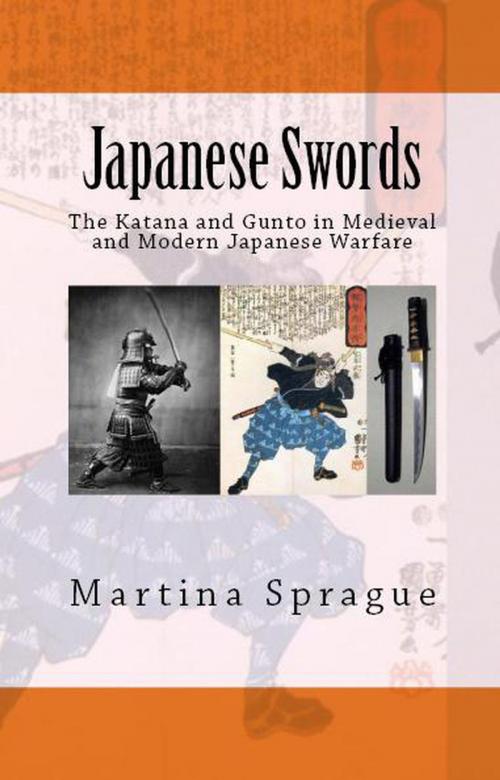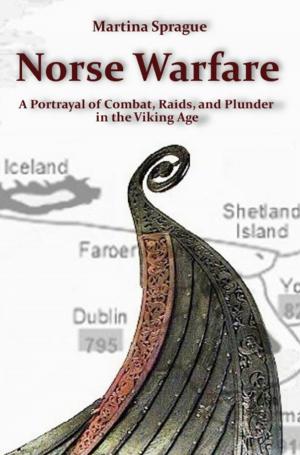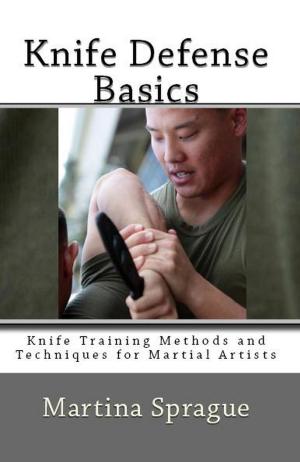Japanese Swords: The Katana and Gunto in Medieval and Modern Japanese Warfare
Knives, Swords, and Bayonets: A World History of Edged Weapon Warfare, #4
Nonfiction, History, Military, Weapons| Author: | Martina Sprague | ISBN: | 9781386259343 |
| Publisher: | Martina Sprague | Publication: | March 14, 2018 |
| Imprint: | Language: | English |
| Author: | Martina Sprague |
| ISBN: | 9781386259343 |
| Publisher: | Martina Sprague |
| Publication: | March 14, 2018 |
| Imprint: | |
| Language: | English |
The sword, a treasured combat arm and symbol of identity, status, and courage has held a special place in most countries of the world. The samurai, however, may have received unparalleled attention in the history of the sword. This brief introduction to medieval Japan demonstrates how the politically strong samurai shaped the view one held of battle. Following the abolishment of the samurai class, the Meiji Restoration, and the opening of Japan to the West in the nineteenth century, Japan was anxious to move ahead with modern military equipment and the building of a national army. Few traditional swords were made and the Japanese adopted western style cavalry sabers. In the twentieth century the sword continued to be carried into battle as a supplementary weapon; not necessarily practical for the battlefield but, nevertheless, serving an important function as a “crutch for the heart.” The gunto, or new-army sword, which was modeled after the samurai katana but modernized to conform to western standards, was carried by army and navy officers and cavalry troops until Japan’s fall at the end of World War II.
This book focuses on the era that one normally associates with the medieval period. It starts by exploring the history of Japanese sword making, the development of metallurgic science, and the skill required of the swordsmith to forge a strong and battle-worthy blade that adhered to the standards followed by the samurai warrior class. It then covers samurai mentality and philosophy of sword fighting, with respect to the battlefield use of the katana and the dynamics of Japanese swordsmanship. It summarizes with a history of the gunto new-army sword and the practical and philosophical value this sword had to the twentieth-century soldier. The concluding remarks focus on the sword as a symbol of Japanese culture.
The sword, a treasured combat arm and symbol of identity, status, and courage has held a special place in most countries of the world. The samurai, however, may have received unparalleled attention in the history of the sword. This brief introduction to medieval Japan demonstrates how the politically strong samurai shaped the view one held of battle. Following the abolishment of the samurai class, the Meiji Restoration, and the opening of Japan to the West in the nineteenth century, Japan was anxious to move ahead with modern military equipment and the building of a national army. Few traditional swords were made and the Japanese adopted western style cavalry sabers. In the twentieth century the sword continued to be carried into battle as a supplementary weapon; not necessarily practical for the battlefield but, nevertheless, serving an important function as a “crutch for the heart.” The gunto, or new-army sword, which was modeled after the samurai katana but modernized to conform to western standards, was carried by army and navy officers and cavalry troops until Japan’s fall at the end of World War II.
This book focuses on the era that one normally associates with the medieval period. It starts by exploring the history of Japanese sword making, the development of metallurgic science, and the skill required of the swordsmith to forge a strong and battle-worthy blade that adhered to the standards followed by the samurai warrior class. It then covers samurai mentality and philosophy of sword fighting, with respect to the battlefield use of the katana and the dynamics of Japanese swordsmanship. It summarizes with a history of the gunto new-army sword and the practical and philosophical value this sword had to the twentieth-century soldier. The concluding remarks focus on the sword as a symbol of Japanese culture.















